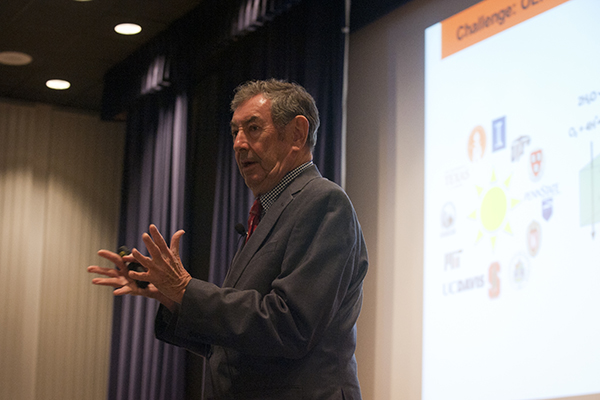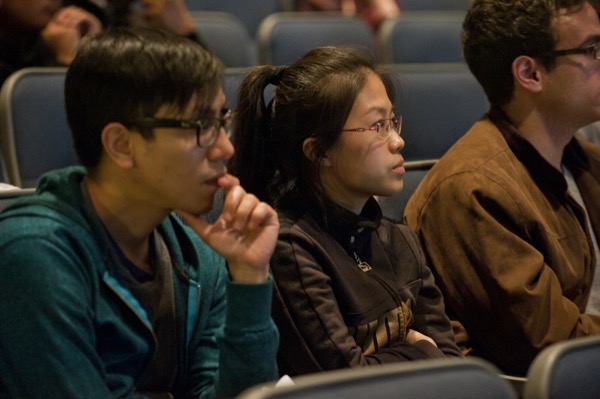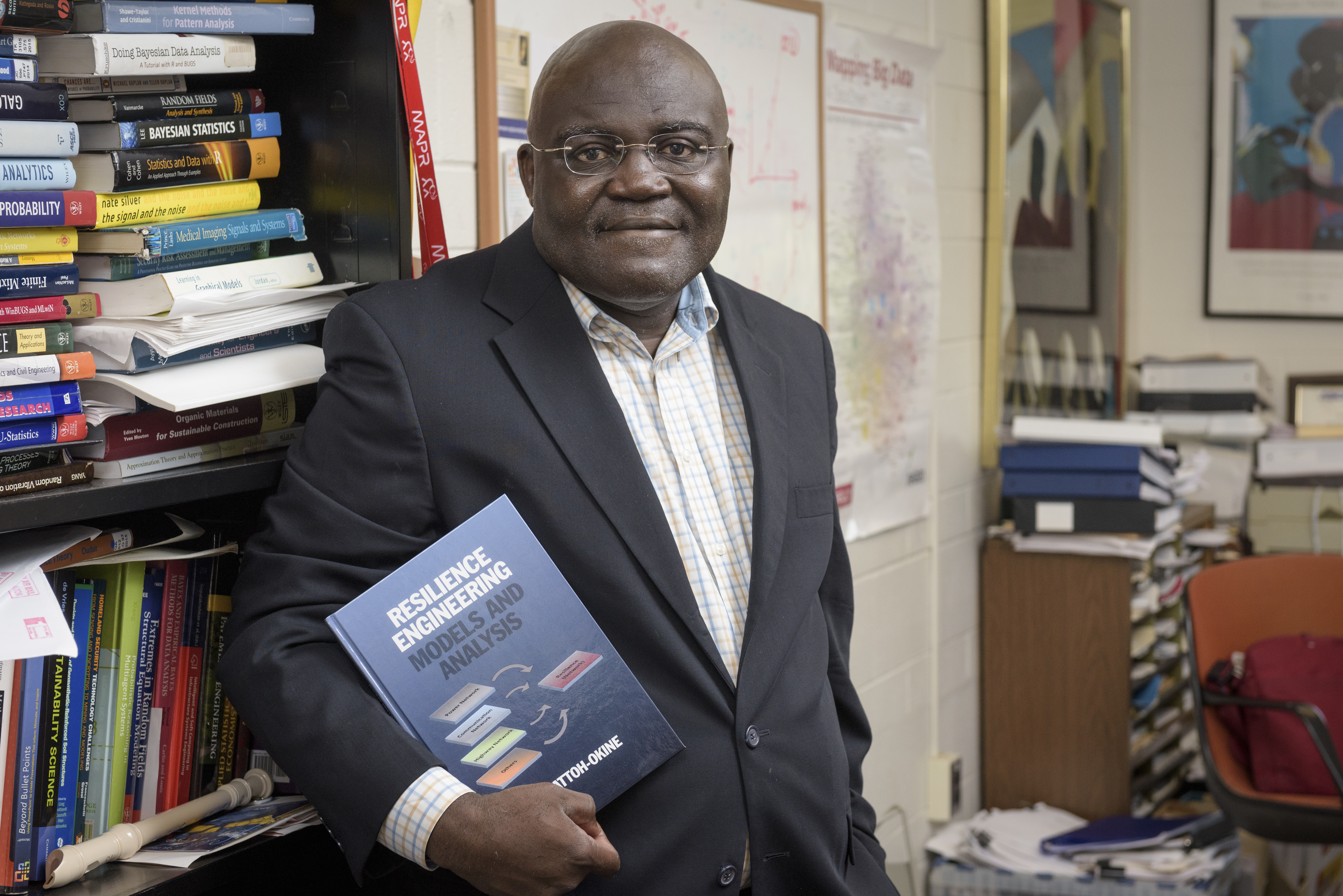Jefferson Lecture
Caltech's Gray recruiting innovative 'army' of solar researchers
9:48 a.m., May 1, 2015--Plants already are experts at this business of solar conversion, turning the sun's energy into the chemical energy they need.
Humans are just starting to get better at it, developing an artificial photosynthesis that will allow them to harness the plentiful energy of the sun and convert it to fuel in cheap, efficient, sustainable ways.
People Stories
'Resilience Engineering'
Reviresco June run
Harry Gray, a distinguished chemist from Caltech, has been working on such ideas for years. Now, as commander-in-chief of his self-assembled "Solar Army," he is leveraging the brainpower of an innovative, diverse and internationally dispersed force of young thinkers and accomplished scientists to find the best components and materials.
Gray visited the University of Delaware last week to deliver the inaugural Edward G. Jefferson Lecture in Life Sciences. And he delivered something for everyone in the Trabant University Center Theatre audience.
Gray gave scientists the details and diagrams of the chemical interactions and processes necessary for solar energy conversion.
He gave non-scientists an in-depth look at the calculations and collaborations researchers have developed as they try to figure out how best to harness and store solar energy.
And he gave 12-year-old Vishaan Shetty good reason to enlist in his "Solar Army," with its mission to find the most efficient, cost-effective materials for solar energy conversion.
It would be cool to be part of that, young Vishaan said later, because it would be doing science, not just reading about it, a comment that supports one of Gray's standing theories.
"Courses don't recruit kids into science," Gray said. "Research does."
His ability to connect with broad audiences and his distinguished contributions to chemistry made him a great choice for the first Jefferson Lecture, said Charles Riordan, UD's deputy provost for research and scholarship, professor of chemistry and biochemistry, and a longtime friend of Gray.
Jefferson, a British chemist, brought the field of life sciences to DuPont during his tenure as CEO and chairman, Riordan said, and expanded the company's investments in research and development at the Experimental Station.
After his death in 2006, the Unidel Foundation established a professorship in Jefferson's honor -- a position Kathy Wu, director of the Center for Bioinformatics and Computational Biology, now holds -- and provided money for the lecture series.
Gray's talk included a review of the steppingstones his team has used to develop solar energy converters with cheap "earth-abundant" materials.
That research builds on the work of John Turner's lab at the National Renewable Energy Laboratory in Colorado, Gray said, where the first device was developed to split water with sunlight at very high efficiencies.
The ability to do that brings a "double-barreled" goal within reach, he said. Seawater can be split with sunlight, freeing hydrogen for use in fuel and leaving clean water in its wake.
Turner's process used platinum -- an expensive metal -- as a catalyst, though, and Gray says the cost to bring that to scale is prohibitive at about $10,000 per square meter.
He decided to pursue a device that would be just as efficient but built with abundant, cheap materials.
His device would scale up at about $100 per square meter, he said, using materials such as cobalt, iron, nickel and molybdenum.
Converting solar energy requires several essential materials -- something to absorb the light, something to separate electrons and holes and transfer electrons, and catalysts to make and break chemical bonds.
Semiconductors such as silicon already are in use, absorbing light and charging the transport of electrons, Gray said. But they can't make and break chemical bonds.
"The problem is the interface between the catalysts and the semiconductor," he said. "We can get a catalyst that works great and a semiconductor that works great. But when we slap them together, they don't work."
Whatever they come up with also has to be durable. Silicon solar cells now come with 30-year guarantees, he said. Solar fuel devices must be that good, he said.
Gray said he and his team have studied how the enzymes known as hydrogenases are used in natural hydrogen-releasing processes. Those big proteins are not stable enough for this solar project, he said. Synthesizing new molecular catalysts is a continuing challenge. About 40 are available now, he said, but more work is needed.
Getting electrons and protons from the seawater is a significant challenge and better catalysts are needed for that process, too, he said. The process includes acid solutions, and the only catalyst suitable for that purpose -- iridium -- is expensive.
"We have to find a water oxidation catalyst that works great very soon," he said. "How are we going to do this?"
Gray developed his "Solar Army" to accomplish that mission, a corps of investigators from high school through doctoral programs who would help search for better options.
Central to the "Army" are high school students -- more than 1,000 of them so far -- that come in just two ranks, private and five-star general. All students start as a private, but as soon as they do anything, they are promoted to five-star general, he said.
Each high school team is linked with mentors in nearby university research groups, Gray said. Guided by their teachers, students use "solar army kits" to experiment after class with various materials to see if any are candidates as heavy-duty catalysts.
The kits include an 8x8 LED scanning station where students measure current and voltage. With that, they can see in real time the photoactivities of the materials they are testing, he said.
The mission to develop sustainable energy that is efficient and affordable is more than possible, Gray said. Already in California motorists can go to a station to fill up their hydrogen-fueled cars.
"The applied physics community is making such great photovoltaics that efficiency is going up, up, up," he said.
That was fine news to Shetty's father, Shekar Shetty, associate director of UD's Office of Economic Innovation and Partnerships.
"I am amazed at the progress they have made," he said. "A few years ago you never would have thought a hydrogen-powered cell would be available. Imagine having one of these things in your garage. It's music to my ears."
And maybe coming sooner than you think.
Article by Beth Miller
Photos by Wenbo Fan












